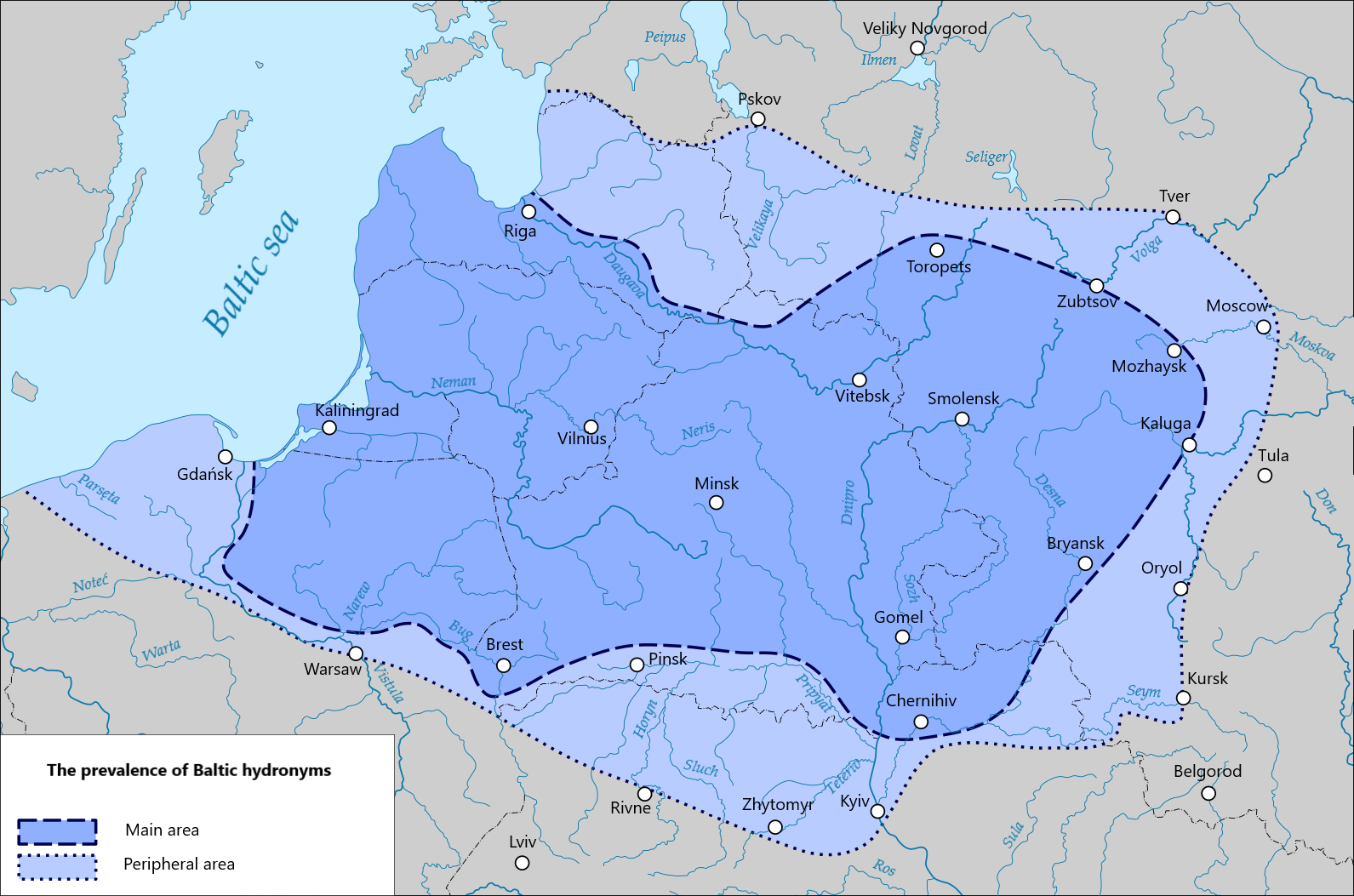|
≈™kininkas
''Ūkininkas'' or ''Ukinįkas'' (literally: ''The Farmer'') was a monthly Lithuanian-language newspaper published during the Lithuanian press ban by the editorial staff of ''Varpas'' from 1890 to 1905. ''Ūkininkas'' was printed in Tilsit (current Sovetsk) and Ragnit (current Neman) in German East Prussia and smuggled into Lithuania by the knygnešiai. The two newspapers shared staff and similar ideology, but ''Ūkininkas'' was geared towards less educated peasants and had larger circulation of 1,000–2,000 copies. It contained few political or cultural discourses and concentrated on practical advice regarding farming, husbandry, and forestry. It also published short news from various locations across Lithuania, helping to develop the idea of Lithuania as a single entity. Various writers, including Jonas Biliūnas, Vincas Kudirka, Gabrielė Petkevičaitė-Bitė, Sofija Pšibiliauskienė, contributed their fiction. After publication of ''Ūkininkas'' was discontinued, it was re ... [...More Info...] [...Related Items...] OR: [Wikipedia] [Google] [Baidu] |
Sofija Pšibiliauskienė
Sofija Pšibiliauskienė ''née'' Ivanauskaitė (; September 16, 1867 in Akmenė District Municipality, Paragiai, Shavelsky Uyezd, Kovno Governorate – March 15, 1926 in Paragiai) and Marija Lastauskienė were two Lithuanian sister writers of Polish people, Polish origin, using the same pen name ''Lazdynų Pelėda'' (''Hazel Owl''). Biography Pšibiliauskienė was born to an impractical painter of szlachta, Polish–Lithuanian nobility stock. Pšibiliauskienė did not have formal education and self-educated reading various sentimental novels by Polish authors. In 1891, she married their neighbor landowner Rapolas Pšibiliauskas (), but the marriage was not happy. In 1903, with two small children, Pšibiliauskienė moved out to Vilnius. She took random jobs as a bookstore saleswoman, seamstress, pharmacy assistant, but still barely managed to avoid poverty. In 1914, she moved to Kaunas, where she fell ill with tuberculosis. She then returned to her childhood home in Paragiai, wher ... [...More Info...] [...Related Items...] OR: [Wikipedia] [Google] [Baidu] |
Varpas
''Varpas'' (literally: ''The Bell'') was a monthly Lithuanian-language newspaper published during the Lithuanian press ban from January 1889 to December 1905. Because its publication was illegal in Lithuania, then part of the Russian Empire, it was printed in Tilsit (current Sovetsk) and Ragnit (current Neman) in German East Prussia and smuggled into Lithuania by the knygnešiai (book smugglers). ''Varpas'', with circulation of about 500 to 1,000 copies, played a pivotal role in the Lithuanian National Revival. ''Tautiška giesmė'', one of poems by founder and editor Vincas Kudirka written to commemorate the 10th anniversary of ''Varpas'', became the Lithuanian national anthem.Classic Lithuanian Literature Anthology Editorial staff of ''Varpas'' later started two more specialized publications: more practical '' Ūkininkas'' (''The Farmer'', 1890–1905) for less educated peasants and apolitical '' Naujienos'' (''News'', 1901–1903) for general public. History After the first n ... [...More Info...] [...Related Items...] OR: [Wikipedia] [Google] [Baidu] |
Lietuvos ≈´kininkas
''Lietuvos ūkininkas'' (literally: ''Lithuanian farmer'') was a weekly Lithuanian-language newspaper published between 1905 and 1940. It was published by and reflected the political views of the Lithuanian Democratic Party, Peasant Union, and Lithuanian Peasant Popular Union. Its printing and daily operations were managed by its long-time publisher Felicija Bortkevičienė. It was a liberal publication geared towards the wider audience of less educated farmers and peasants. In 1933, its circulation was 15,000 copies. When Lithuania was occupied by the Soviet Union in 1940, the newspaper was nationalized and replaced by '' Valstiečių laikraštis''. History Aster the end of the Lithuanian press ban in 1904, Jonas Vileišis started organizing a replacement publication for '' Ūkininkas'', monthly newspaper published in East Prussia. The first issue appeared in Vilnius on 14 December 1905, after the Great Seimas of Vilnius. The first two issues were edited by Povilas Višinsk ... [...More Info...] [...Related Items...] OR: [Wikipedia] [Google] [Baidu] |
Lithuanian Language
Lithuanian (, ) is an East Baltic languages, East Baltic language belonging to the Baltic languages, Baltic branch of the Indo-European language family. It is the language of Lithuanians and the official language of Lithuania as well as one of the official languages of the European Union. There are approximately 2.8 million native Lithuanian speakers in Lithuania and about 1 million speakers elsewhere. Around half a million inhabitants of Lithuania of non-Lithuanian background speak Lithuanian daily as a second language. Lithuanian is closely related to neighbouring Latvian language, Latvian, though the two languages are not mutually intelligible. It is written in a Latin script. In some respects, some linguists consider it to be the most conservative (language), conservative of the existing Indo-European languages, retaining features of the Proto-Indo-European language that had disappeared through development from other descendant languages. History Among Indo-European languag ... [...More Info...] [...Related Items...] OR: [Wikipedia] [Google] [Baidu] |
Defunct Monthly Newspapers
{{Disambiguation ...
Defunct may refer to: * ''Defunct'' (video game), 2014 * Zombie process or defunct process, in Unix-like operating systems See also * * :Former entities * End-of-life product * Obsolescence Obsolescence is the process of becoming antiquated, out of date, old-fashioned, no longer in general use, or no longer useful, or the condition of being in such a state. When used in a biological sense, it means imperfect or rudimentary when comp ... [...More Info...] [...Related Items...] OR: [Wikipedia] [Google] [Baidu] |
1890 Establishments In Germany
Year 189 ( CLXXXIX) was a common year starting on Wednesday of the Julian calendar. At the time, it was known as the Year of the Consulship of Silanus and Silanus (or, less frequently, year 942 ''Ab urbe condita''). The denomination 189 for this year has been used since the early medieval period, when the Anno Domini calendar era became the prevalent method in Europe for naming years. Events By place Roman Empire * Plague (possibly smallpox) kills as many as 2,000 people per day in Rome. Farmers are unable to harvest their crops, and food shortages bring riots in the city. China * Liu Bian succeeds Emperor Ling, as Chinese emperor of the Han dynasty. * Dong Zhuo has Liu Bian deposed, and installs Emperor Xian as emperor. * Two thousand eunuchs in the palace are slaughtered in a violent purge in Luoyang, the capital of Han. By topic Arts and sciences * Galen publishes his ''"Treatise on the various temperaments"'' (aka ''On the Elements According to Hippocra ... [...More Info...] [...Related Items...] OR: [Wikipedia] [Google] [Baidu] |
Defunct Lithuanian-language Newspapers
{{Disambiguation ...
Defunct may refer to: * ''Defunct'' (video game), 2014 * Zombie process or defunct process, in Unix-like operating systems See also * * :Former entities * End-of-life product * Obsolescence Obsolescence is the process of becoming antiquated, out of date, old-fashioned, no longer in general use, or no longer useful, or the condition of being in such a state. When used in a biological sense, it means imperfect or rudimentary when comp ... [...More Info...] [...Related Items...] OR: [Wikipedia] [Google] [Baidu] |
Publications Disestablished In 1905
To publish is to make content available to the general public.Berne Convention, article 3(3) URL last accessed 2025-05-23.Universal Copyright Convention, Geneva text (1952), article VI . URL last accessed 2010-05-10. While specific use of the term may vary among countries, it is usually applied to , images, or other |
Newspapers Established In 1890
A newspaper is a periodical publication containing written information about current events and is often typed in black ink with a white or gray background. Newspapers can cover a wide variety of fields such as politics, business, sports, art, and science. They often include materials such as opinion columns, weather forecasts, reviews of local services, obituaries, birth notices, crosswords, editorial cartoons, comic strips, and advice columns. Most newspapers are businesses, and they pay their expenses with a mixture of subscription revenue, newsstand sales, and advertising revenue. The journalism organizations that publish newspapers are themselves often metonymically called newspapers. Newspapers have traditionally been published in print (usually on cheap, low-grade paper called newsprint). However, today most newspapers are also published on websites as online newspapers, and some have even abandoned their print versions entirely. Newspapers developed in the 17th c ... [...More Info...] [...Related Items...] OR: [Wikipedia] [Google] [Baidu] |
Vilnius
Vilnius ( , ) is the capital of and List of cities in Lithuania#Cities, largest city in Lithuania and the List of cities in the Baltic states by population, most-populous city in the Baltic states. The city's estimated January 2025 population was 607,667, and the Vilnius urban area (which extends beyond the city limits) has an estimated population of 747,864. Vilnius is notable for the architecture of its Vilnius Old Town, Old Town, considered one of Europe's largest and best-preserved old towns. The city was declared a World Heritage Site, UNESCO World Heritage Site in 1994. The architectural style known as Vilnian Baroque is named after the city, which is farthest to the east among Baroque architecture, Baroque cities and the largest such city north of the Alps. The city was noted for its #Demographics, multicultural population during the Polish–Lithuanian Commonwealth, with contemporary sources comparing it to Babylon. Before World War II and The Holocaust in Lithuania, th ... [...More Info...] [...Related Items...] OR: [Wikipedia] [Google] [Baidu] |
Gabrielė Petkevičaitė-Bitė
Gabrielė Petkevičaitė (18 March 1861 – 14 June 1943) was a Lithuanian educator, writer, and activist. Her pen name Bitė (''Bee'') eventually became part of her last name. Encouraged by Povilas Višinskis, she joined public life and started her writing career in 1890, becoming a prominent member of the Lithuanian National Revival. She was the founder and chair of the Žiburėlis society to provide financial aid to struggling students, one of the editors of the newspaper ''Lietuvos žinios'', and an active member of the women's movement. In 1920, she was elected to the Constituent Assembly of Lithuania and chaired its first session. Her Literary realism, realist writing centered on exploring the negative impact of the social inequality. Her largest work, two-part novel ''Ad astra'' (1933), depicts the rising Lithuanian National Revival. Together with Žemaitė, she co-wrote several plays. Her diary, kept during World War I, was published in 1925–1931 and 2008–2011. Biogra ... [...More Info...] [...Related Items...] OR: [Wikipedia] [Google] [Baidu] |






